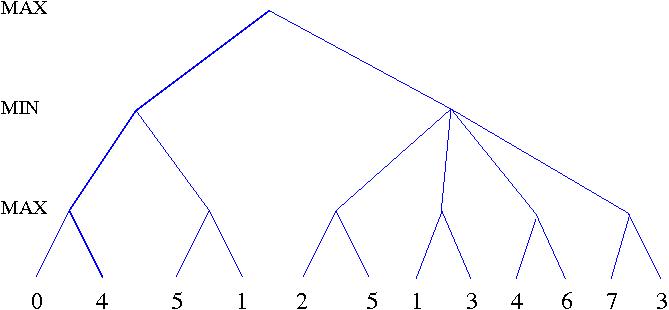1 2 3 8 5 4 7 6
Keeping in mind that the goal state is:
1 2 3 4 5 6 7 8
Trace the A*Search algorithm using the Total Manhattan Distance heuristic, to find the shortest path from the initial state shown above, to the goal state.
This problem exercises the basic concepts of game playing, using tic-tac-toe (naughts and crosses) as an example. We define Xn as the number of rows, columns or diagonals with exactly n X's and no O's. Similarly, On is the number of rows, columns or diagonals with just n O's. The utility function assigns +10 to any position with X3>=1 and -10 to any position with O3>=1. All other terminal positions have utility 0. For the nonterminal positions, we use a linear evaluation function defined as
Eval(s) = 3X2(s) + X1(s) - (3O2(s) + O1(s))
- Approximately how many possible games of tic-tac-toe are there?
- Show the whole game tree starting from an empty board down to depth 2 (i.e. one X and one O on the board), taking symmetry into account.
- Mark on your tree the evaluations of all the positions at depth 2.
- Using the minimax algorithm, mark on your tree the backed-up values for the positions at depths 1 and 0, and use those values to choose the best starting move.
- Circle the nodes at depth 2 that would not be evaluated if alpha-beta pruning were applied, assuming the nodes are generated in the optimal order for alpha-beta pruning.
